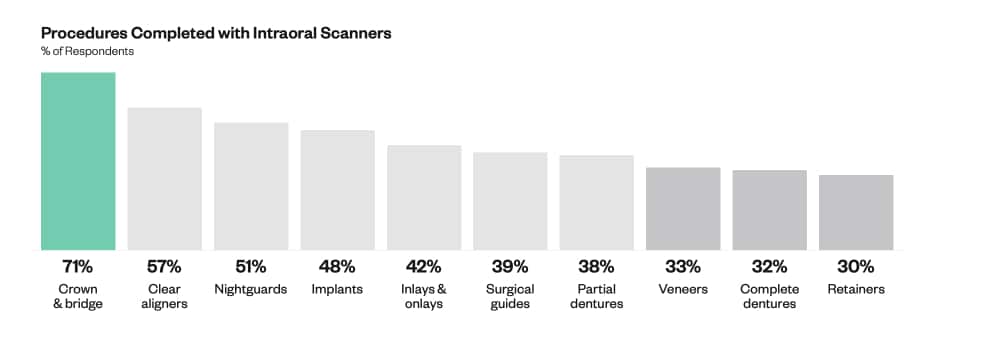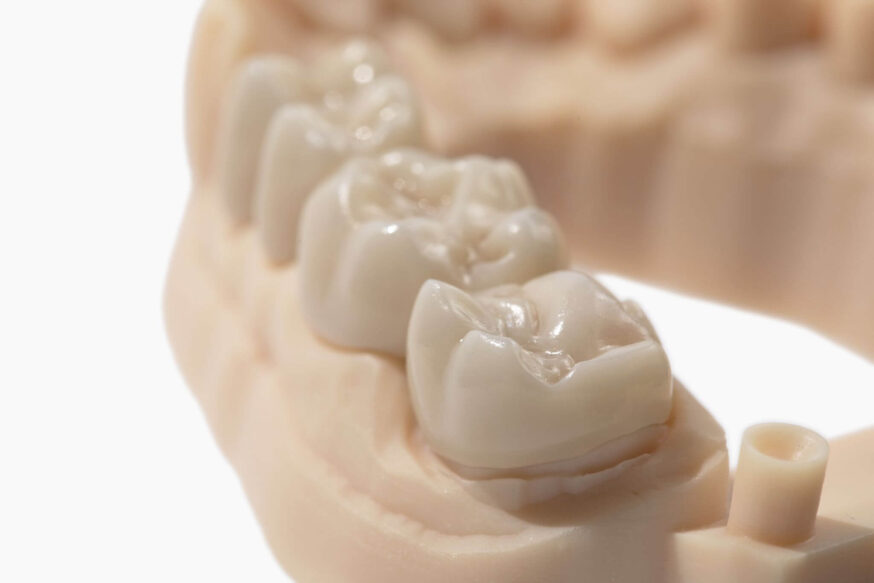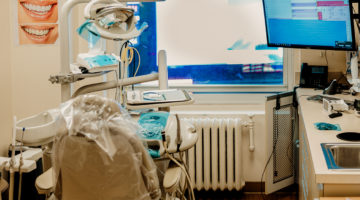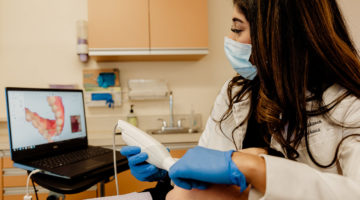There are 150,000+ dental practices in the US today – and not one of them can escape rising costs from inflation and supply chain challenges. This explains some trends we found when we surveyed dental practitioners for Dandy’s 2022 Dental Industry Report. Dentists are prioritizing increasing practice profitability, production, and increasing effort to attract new patients to their dental practices in an effort to offset rising costs. Sounds like a tall order.
So, where do you start?
Stay competitive by adding a high-growth service
Of dental practices surveyed in our Dental Industry Report, services performed include preventative, restorative, and aesthetic services. The top four restorative services are routine cleanings, crown and bridge, whitening, and dentures.
As general dentists make up the majority of survey respondents, specialized procedures were less common. Yet the top treatments forecasted to grow within the next five years are specialty services such as orthodontia and endodontia.
To capitalize on the market demand, general practices should consider diversifying their services into these high-growth areas.
Services expected to grow at least 5% in the next 3-5 years
- Clear aligners
- Implants placed
- Implants restored
- Zirconia crowns & bridge
- Nightguards
- E.max crown & bridge
“With the clear aligner market projected to surpass crown and bridge by 2023, offering clear aligners is a great way to increase profitability and drive additional traffic to your practice.”
Peter H. Chen, DDS, DMSc, MBA
Typically, adding new services can add administrative overhead and headaches. With digital dentistry, it doesn’t have to. We’ve laid out three steps to take to add some of these services to your dental practices in order to grow your dental practice. Some of these might require a few adjustments, so we’re also including concrete information on where to get started.
How to easily add high-growth services with digital dentistry
1. Use an Intraoral Scanner for More Services
When it comes to common use cases for intraoral scanning, crown and bridge restorations are by far the most-completed procedures at 71%, with clear aligners a distant second at 57%. These figures are not surprising when you consider that, as the most common dental procedures outside of routine cleanings, crown and bridge restorations are performed by 90% of dental practitioners. They are also the simplest workflows to adopt.
Procedures least performed with intraoral scanners:
- Veneers
- Complete Dentures
- Retainers
Some of the most under-utilized procedures are retainers, complete dentures, and veneers, which could be due to a lab partner’s ability to accept digital impressions for these products.

Switching from physical impressions to intraoral scanning offers many benefits, specifically opportunities for higher production. Intraoral scanning increases case acceptance through patient presentation and can be performed by any staff member, affording dentists more time to perform higher-skilled services.
How to do it
Research intraoral scanners to choose the right one for your practice. Check out these 4 criteria to consider as you evaluate your scanner options. If you already have a scanner, start looking into what digital workflows you can add.
2. Adopt digital workflows
It’s an exciting time for dentistry as digital tools for general practices become more affordable and accessible. As a result, digital methods for impressions and restorative and aesthetic treatments are on the rise and aren’t as difficult to implement in your practice as you might think.
One indicator of digital growth is the number of dentists who use intraoral scanning technology within their practice. While the number of services may vary from practice to practice, 50% of practitioners report they are currently using an intraoral scanner, while 51% of those who are not currently using an intraoral scanner plan to start this year.
The shift to digital isn’t unexpected or surprising. The precedent for digital adoption in everyday life and across all business sectors is standard now, especially when technology provides a more convenient user experience. An intraoral scanner paired with digital treatment and case management tools and software, provides a seamless experience for dentists that is simpler and often faster than traditional methods.
As intraoral scanning grows, coupled with strong patient preferences for digital impressions, dental practices that offer digital dentistry could gain a competitive advantage over those that don’t.
How to do it
Remember that using an intraoral scanner is just one part of going digital. You’ll want to find workflow and case management software that works with the scanner you choose. Once you’ve done that, evaluate every service you currently offer to see which ones can be managed digitally.
Related
- 5 Reasons Digital Dental Impressions Are the Solution You’ve Been Looking For
- Trends in Dentistry: 5 Crucial Takeaways You Can Actually Use
- The Top 5 Benefits of a Digital Workflow for Dentistry According To Real Dentists
3. Work with a digital lab
Your local or national lab may support scanned impressions, but are they a fully digital lab? Sure, supporting scanned impressions will cut down on shipping costs and time. But the benefits skyrocket with a fully digital lab like Dandy.
As experts in scanning, a digital lab like Dandy provides step-by-step training and a modern support team to help you easily adopt digital dentistry. If you have questions, you can chat with a support team through the scanning and case management portal. As soon as your scan is done, you submit it to the lab instantly. And the portal allows you to review digital wax-ups and track your case in real time – no complicated, error-prone forms required.
Best yet, thanks to high-quality design, remakes are nearly unheard of which leads to extremely high rates of customer satisfaction and new patient referrals.
How to do it
First, the basics: make sure your lab can accept digital scans. Ask them about their experience with scanning. What percentage of their case load is scanned vs. traditional? How long have they been working with scanned impressions? Not all labs are equal when it comes to digital dentistry. You can benefit from a fully digital lab specializing in digital dentistry (hint: that’s Dandy!).
Dandy’s Dental Industry Report contains tons of insights for dentists and practice owners. Download the report for free to see how you can gain and maintain a competitive advantage.



